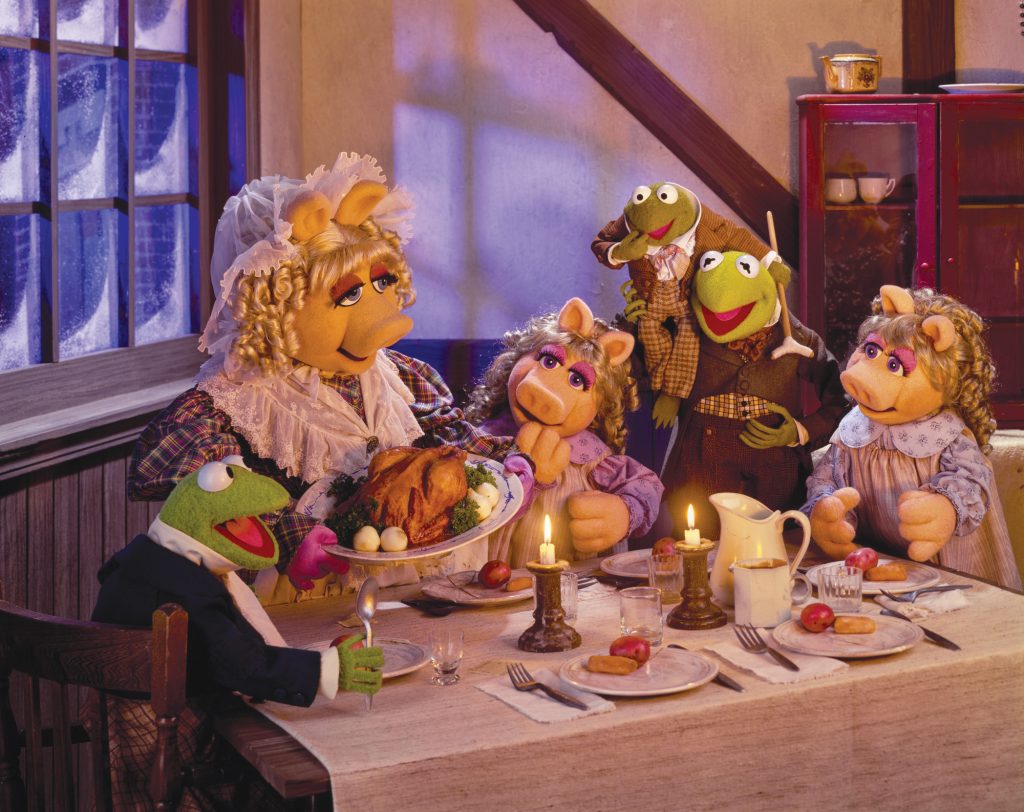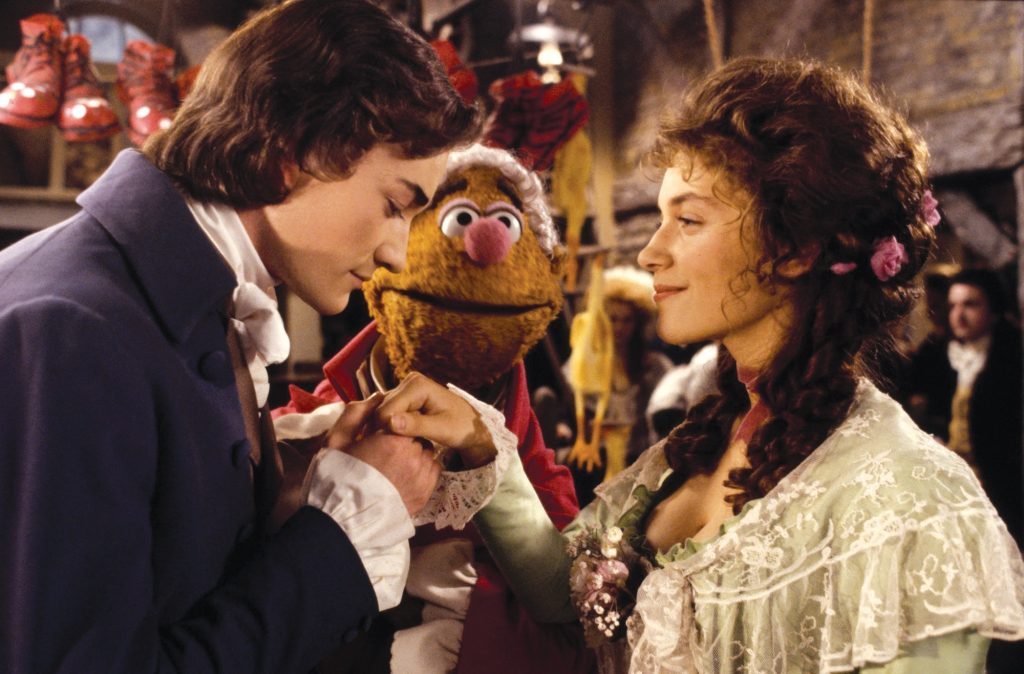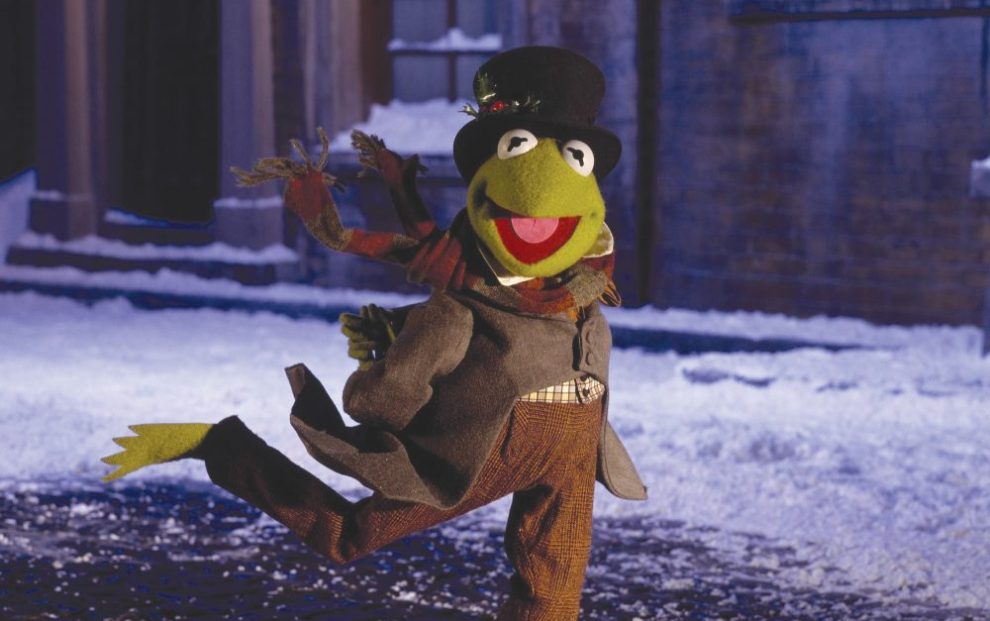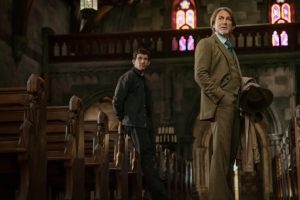Every December, as consumerism reaches its peak, audiences are presented with some reimagined variation of Charles Dickens’ classic tale, A Christmas Carol. Over the years, Dickens’ story has proven to be extremely malleable. Long before Pixar and movies like Tim Burton’s genre-breaking A Nightmare Before Christmas offered exemplary movies for children and adults alike, Dickens wove together a spooky ghost story and Christian moral lessons into a feel-good drama that was good for family members of all ages.
A Christmas Carol has become a modern archetype that we watch again and again as much for its traditional message as for its creative reimaginings. Amid the multitude of productions, one can scarcely find a better introduction and surprisingly fulfilling Catholic-friendly interpretation than The Muppet Christmas Carol.
The Muppets? Really? Purists may shudder. Wasn’t Dickens a social critic? Shouldn’t audiences be confronted with the harsh injustices that Ebenezer Scrooge represents and not the tomfoolery of Kermit the Frog and Fozzie bear? Indeed, upon its release in 1992 the movie met with some criticism for its more lighthearted tone. It seems critics desired a darker and grittier reality than what the Muppets offered. Fast forward 30 years and FX’s recent A Christmas Carol miniseries, with its adult content and harsh outlook on life, shows that trend has not faded. Even versions that attempt to be more family oriented, such as Disney’s A Christmas Carol with Robert Zemeckis and Jim Carrey, often miss the mark with cold CGI characters and atmosphere.

Pulitzer Prize-winning critic Roger Ebert astutely observed in his original review of The Muppet Christmas Carol how strange it was that such a “tale of Gothic gloom . . . should become the most beloved of all fictional Christmas stories.” Nevertheless, Ebert welcomed the lighter tone of the Muppet version and positively observed how children in the theater laughed and took to the movie. After all, Christmas is about joy and wonder, isn’t it?
Originally penned in 1843, Dickens’ story is brilliant, impressively touching upon themes universal, religious, and political. Having made a number of popular Christmas specials for television, and with their acclaimed work in children’s educational television, the Muppet creators knew the potential for a hit film for children and families.
However, they also had some monumental challenges, perhaps none more profound than the death of Jim Henson. In 1990, at the age of only 53, Muppet creator and indefatigable director, performer, and storyteller Jim Henson died. Muppet Studios lost their visionary, stalwart, creative companion, and friend. Indeed, they lost the voice of Kermit the Frog! The way forward was not clear; nonetheless, retelling this Christmas classic offered a chance to begin a new chapter.
One thing was essential: Scrooge needed to be perfectly cast. Amid the amazing talents of Muppet performers such as Frank Oz, Dave Goelz, and Steve Whitmire; the actors’ perfect comedic timing; and the wonderful songs that give substance to the film, someone had to provide a foil to all that humor and heart. The answer: Sir Michael Caine. Refusing to soften the character or pander to the audience, Caine plays Ebenezer Scrooge with cold-hearted grandeur. Who else could unleash such unabashed hostility toward Muppets so accustomed to encouraging children and looking for the good in people? With all his vitriol and refusal to acknowledge experiences other than his, Caine’s Scrooge sets the stage for a true journey of conversion.
Jerry Juhl, who worked with Henson to create the Muppets in the early 1960s, wrote the screenplay with great deference to Dickens.Depending upon their social circumstances, talk of mortgages, foreclosures, and greed may go over the heads of some children. However, the foreboding interiors, oblique camera angles, and Caine’s cruel demeanor successfully convey the simple truth: Scrooge is a mean bully. Kids know one when they see one.
The dialogue also carries weight and connects on other levels. Scrooge’s bookkeepers ask for a little more coal to heat the office and are threatened with unemployment while solicitors on behalf of those who are poor and homeless are viciously dismissed with the suggestion that prisons, poorhouses, and death are their best options. Through a Catholic lens, essential social justice teachings like the dignity of the human person and the rights and responsibilities of workers quickly surface, as do issues of the differing demands of charity and justice. Suffice it to say, whether child or adult, all are frightened by Scrooge’s words and actions.
“[The Muppet Christmas Carol] doesn’t turn Christmas into escapism, as if what happens the rest of the year doesn’t matter.”
Enter the ghosts of Marley and Marley, Scrooge’s former business partners come to warn him of the afterlife consequences of his greed and selfishness. Perfectly played by hecklers Statler and Waldorf from The Muppet Show, they bemoan their fate in song: “We should have known our evil deeds / Would put us both in shackles.”
The movie abounds with straightforward lyrics like these that distill the story’s message. Paul Williams, who cowrote one of the Muppets’ most famous songs, “The Rainbow Connection,” brings his considerable gifts to these songs, making the film’s content memorable and easily approachable.
Scrooge’s subsequent journeys with the Ghosts of Christmas Past, Present, and Future are as revelatory as they are enjoyable. Poignant moments convey the message of their encounters, yet they are balanced with moments of humor and joy. The delightful Ghost of Christmas Present steals the show. A jolly, rotund figure who truly sees the present as a gift, forgetful because he lives in the “now,” he sings as he leads Scrooge and a coterie of Christmas revelers down the street: “It’s true, wherever you find love / It feels like Christmas.”
Meanwhile, the film uses the Ghost of Christmas Past not only to shed light upon Scrooge’s tragic motivations but also to cleverly apply social criticism. Tellingly, young Scrooge’s headmaster encourages him to embrace a no-nonsense perspective in the field of business, saying, “It’s the American way!” This is a clear wink toward the fact that business devoid of conscience and rooted only in personal gain leads to a brutal worldview and dire consequences for society.
After a final spectral visit from the Ghost of Christmas Future, we are treated with the gratifying sight of Scrooge practically skipping down the cobblestone streets, charitably giving and singing a Christian message of justice and peace for all human- and Muppet-kind: “Yes and every night will end and every day will start / with a grateful prayer and a thankful heart / With an open smile and with open doors / I will bid you welcome / What is mine is yours.”
Adults will take note when Scrooge tells Kermit that he will increase his salary—offering the “living and just wage” espoused in Catholic social teaching. While it would’ve been nice to connect better health care due to just wages with Tiny Tim’s survival, the message gets through: When people look out for one another, life is better for everyone.

But it’s in the balance between humor and solemnity, moral consequence and slapstick and song that The Muppet Christmas Carol distinguishes itself. In our time obsessed with technology, it offers a puppet show. In our age so enamored with cynicism and fear, it offers hope and trust in humanity’s goodness.
Importantly though, it doesn’t turn Christmas into escapism, as if what happens the rest of the year doesn’t matter. As in Dickens’ classic, The Muppet Christmas Carol uses Christmas as an opportunity for conversion. Thankfully, it doesn’t feel the need to weigh its audience down to do so. You may even find yourself singing some of these songs each Christmas. Striking such a careful balance and finding perennial allure, it’s hard to find a better introduction to Dickens’ classic tale than this one.
This article also appears in the December 2024 issue of U.S. Catholic (Vol. 89, No. 12, pages 23-25). Click here to subscribe to the magazine.
All images: The Muppets Studio













Add comment